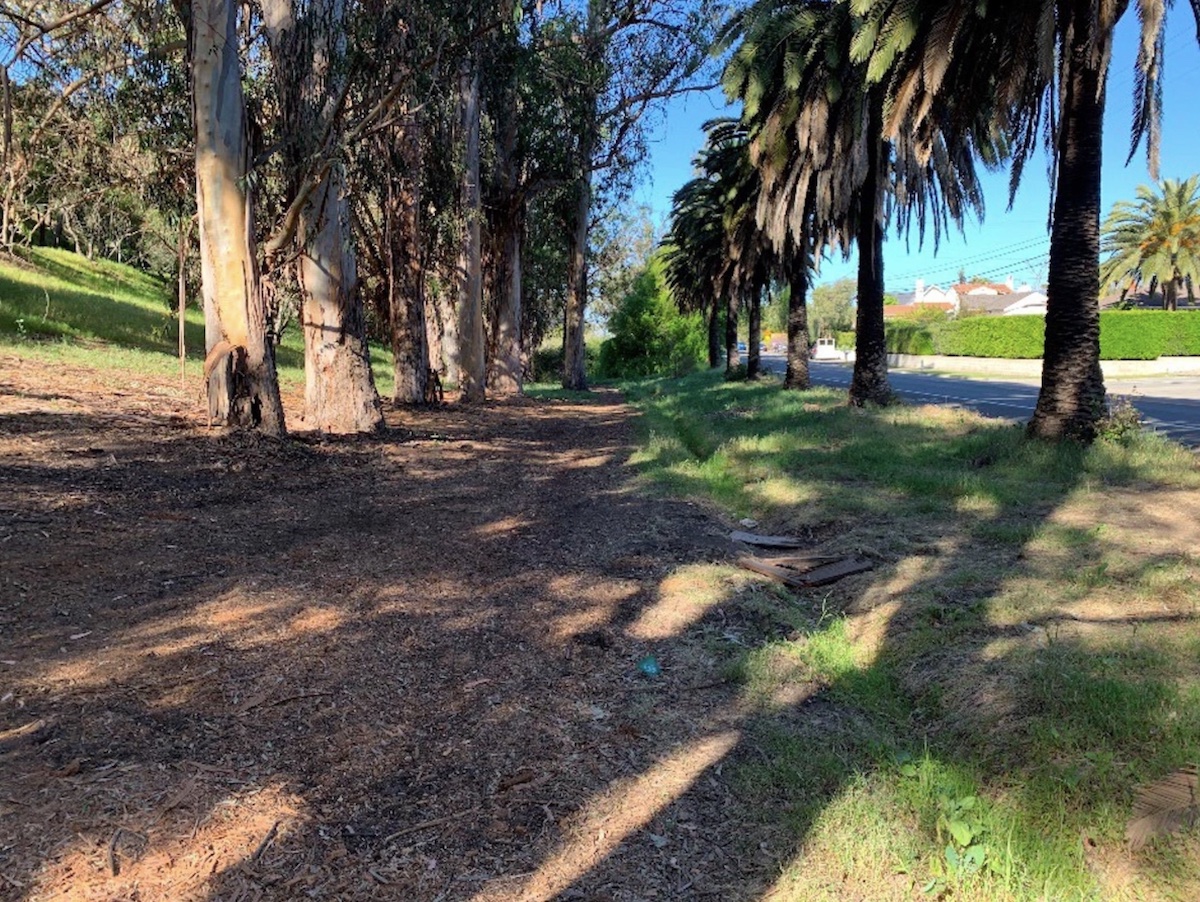Modoc Road Multi-Use Trail Proposal Wins Round One
Fate of Controversial Bike Path in Santa Barbara Could Hinge on Meaning of ‘Significant’

Advocates for a new bike lane proposed along a 4,000-foot stretch of Modoc Road in Santa Barbara overwhelmed their preservationist-minded opponents with sheer numbers, passion, and positivity at last week’s county supervisors’ hearing, winning in the process a key victory without which the proposal would have been dead on arrival. The county supervisors voted unanimously to award the project a “mitigated negative declaration” for purposes of environmental review. That means the project can now proceed to the design phase and begin to draw upon the $5.3 million state grant for alternative-transportation projects for which the proposal was the top ranked in the state.
But the dispute — pitting alt-transportation advocates against neighborhood activists out to save trees along Modoc Road — is hardly settled. Remaining at issue is whether the proposed 15-foot-wide paved path can be built through a 50-acre nature preserve next to Modoc Road without “substantially” or “significantly” violating the legal restrictions written into the easement to protect the land from development. Based on testimony from the Santa Barbara Land Trust — which has managed the Modoc Road Preserve since its inception in 1999 — it’s not clear that’s possible given that the easement specifically bans “the construction of any road or structure” and the use of any motorized vehicle. Joining the Land Trust in this concern was the La Cumbre Mutual Water Company.
Supervisor Steve Lavagnino expressed incredulity that preservationists found themselves at such loggerheads. “You guys have the same goal!” he exclaimed.
Triggering the controversy were initial plans that called for the removal of up to 64 trees along Modoc Road where a smaller existing bike lane — not separated from the flow of traffic — now exists. Of those, 29 were the iconic Canary palms. Outraged by the proposed slaughter of so many iconic specimens, a group of neighbors organized and collected more than 5,000 signatures opposing the project. Since then, the number of trees to be removed under that scenario — known as Alternative A — has been whittled down to 48. But if the bike path were allowed to encroach into the preserve — known as Alternative B — that number could be dropped further still, to 21. Of those, none would be Canary palms, three would be oaks, and 13 would be eucalyptus, with the remaining five trees being various species.
It didn’t help matters any that county Public Works officials never contacted the Land Trust until this July. Supervisor Gregg Hart, who represents the district and is a staunch supporter of the new bike path, acknowledged mistakes were made. He, too, would have signed the petition, he said, based on the early estimates of tree casualties. But, he stressed, even Yosemite National Park — “the crown jewel of the national park system” — has 23 paved or semi-paved trails.
Sign up for Indy Today to receive fresh news from Independent.com, in your inbox, every morning.
Animated by the specter of climate change, bike advocates and their allies rallied in response to the initial passion and vehemence of the proposal’s opponents. Enlisting residents who helped found the Modoc Preserve, they argued the community could have both trees and trails. If anything, they argued, the new “multi-use” bike path would open the preserve, allowing more people to savor the saved environment.
“To enjoy the preserve, you must go into the preserve,” declared Jim Kemp, former chief executive for the Santa Barbara County Association of Governments.
The bike path’s advocates cited the 13 serious accidents that befell bike riders on that stretch of road — where cars zoom past at 50 miles an hour — over the last 10 years. One involved a fatality. A new, segregated bike lane, they argued, would be infinitely safer, allowing Westside kids to ride their bikes to San Marcos High School without mingling with traffic.
“I hear the screeches,” one 12-year-old supporter of the path testified.
Some of the neighborhood critics remained unconvinced. The mitigated negative declaration was neither accurate nor truthful, they argued. Others argued that either alternative — A or B — was “completely and totally unreasonable.”
Supervisor Hart radiated 1,000-watt optimism, saying, “This is our chance to rise to the moment.” After the meeting, he described the easement as “just words written on a piece of paper 30 years ago,” adding that their meaning “lay in the eye of the beholder.” For example, the prohibition against motorized vehicles it contained, he said, was written decades before electric bikes were ever contemplated. If people were of a mind to find a solution, he said, a solution could be found.
“The road ahead in these situations is never clear or straight,” he said. “It’s always one step at a time.”
Support the Santa Barbara Independent through a long-term or a single contribution.



